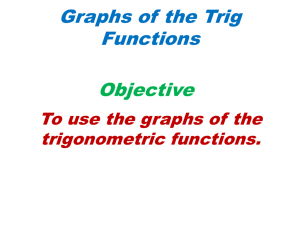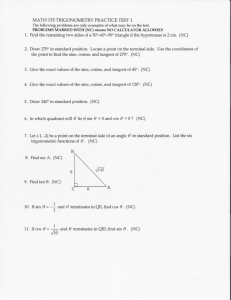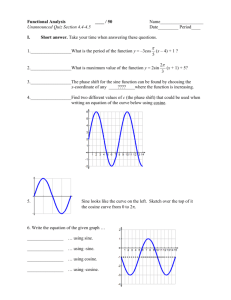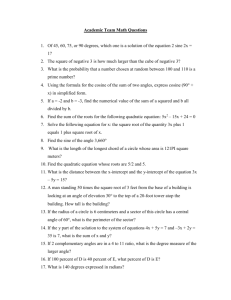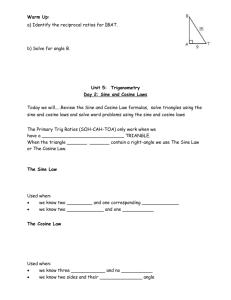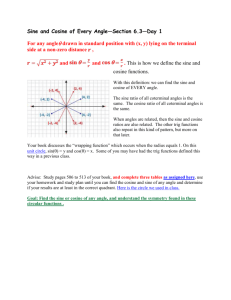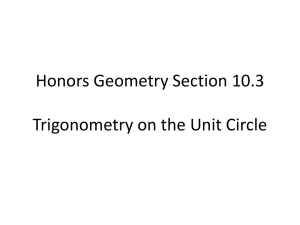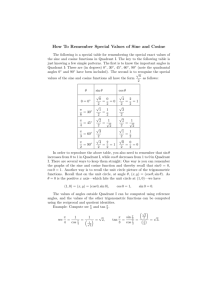Sine and Cosine as complements
advertisement
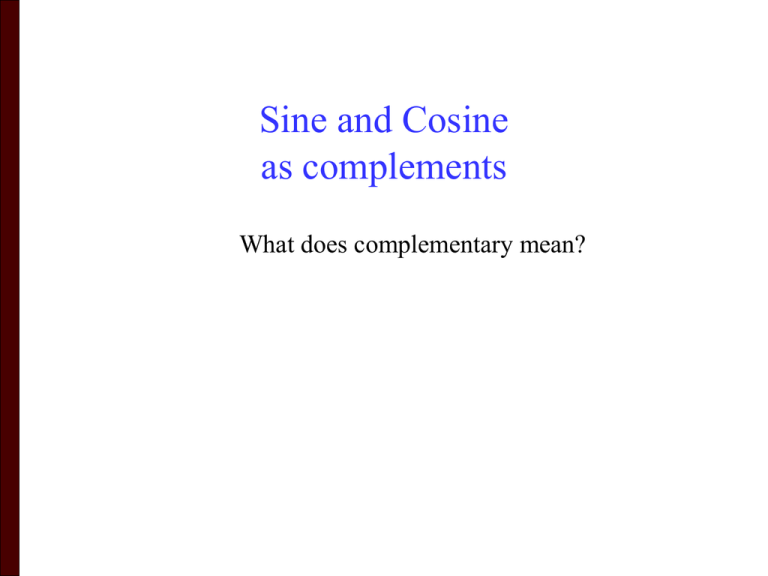
Sine and Cosine as complements What does complementary mean? Key Concepts, continued • In , sin A = cos B, and sin B = cos A. sin A = a c = cos B sin B = b c = cos A 2 2.1.2: Exploring Sine and Cosine As Complements Slide 6.1 - 2 Key Concepts, continued • This relationship between sine and cosine is known as an identity. An equation is an identity if it is true for every value that is used in the equation. • Sine and cosine are called cofunctions because the value of one ratio for one angle is the same as the value of the other ratio for the other angle. • The two acute angles in a right triangle have a sum of 90°. They are complementary angles. If one acute angle has a measure of x, the other angle has a measure of 90° − x. 3 2.1.2: Exploring Sine and Cosine As Complements Slide 6.1 - 3 Key Concepts, continued • For example, if one acute angle x has a measure of 70°, the other acute angle must measure 90 − x. 90 - x = 20 or 20° • • • The sine-cosine cofunction can be written as: sin q = cos (90° - q ) cos q = sin (90° - q ) In other words, you can use the sine of one acute angle to find the cosine of its complementary angle. Also, you can use the cosine of one acute angle to find the sine of its complementary angle. 4 2.1.2: Exploring Sine and Cosine As Complements Slide 6.1 - 4 Key Concepts, continued • This identity relationship makes sense because the same side lengths are being used in the ratios for the different angles. • Cofunctions such as sine-cosine give you flexibility in solving problems, particularly if several ratios of trigonometry are used in the same problem. Postulate Sine and cosine are cofunction identities. sin q = cos (90° - q ) cos q = sin (90° - q ) 5 2.1.2: Exploring Sine and Cosine As Complements Slide 6.1 - 5 Guided Practice Example 1 Find sin 28° if cos 62° » 0.469. 6 2.1.2: Exploring Sine and Cosine As Complements Slide 6.1 - 6
